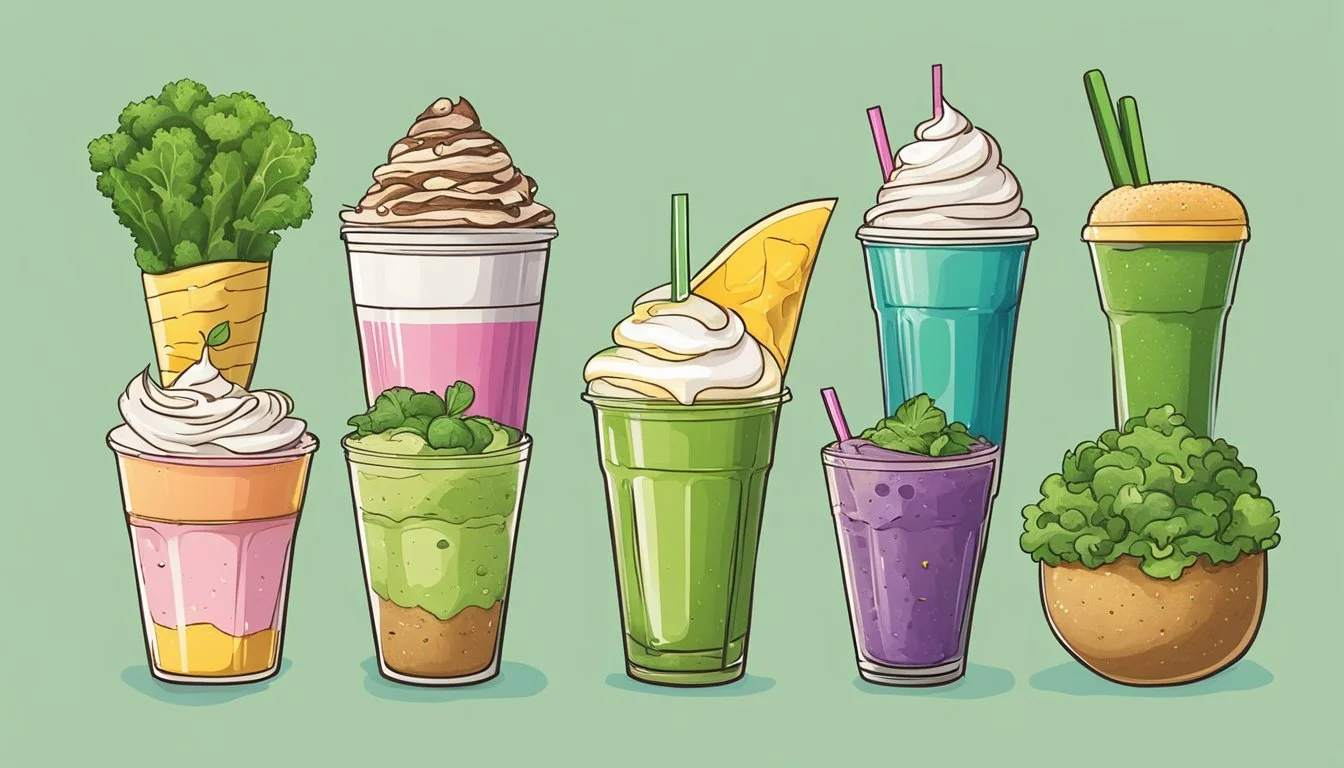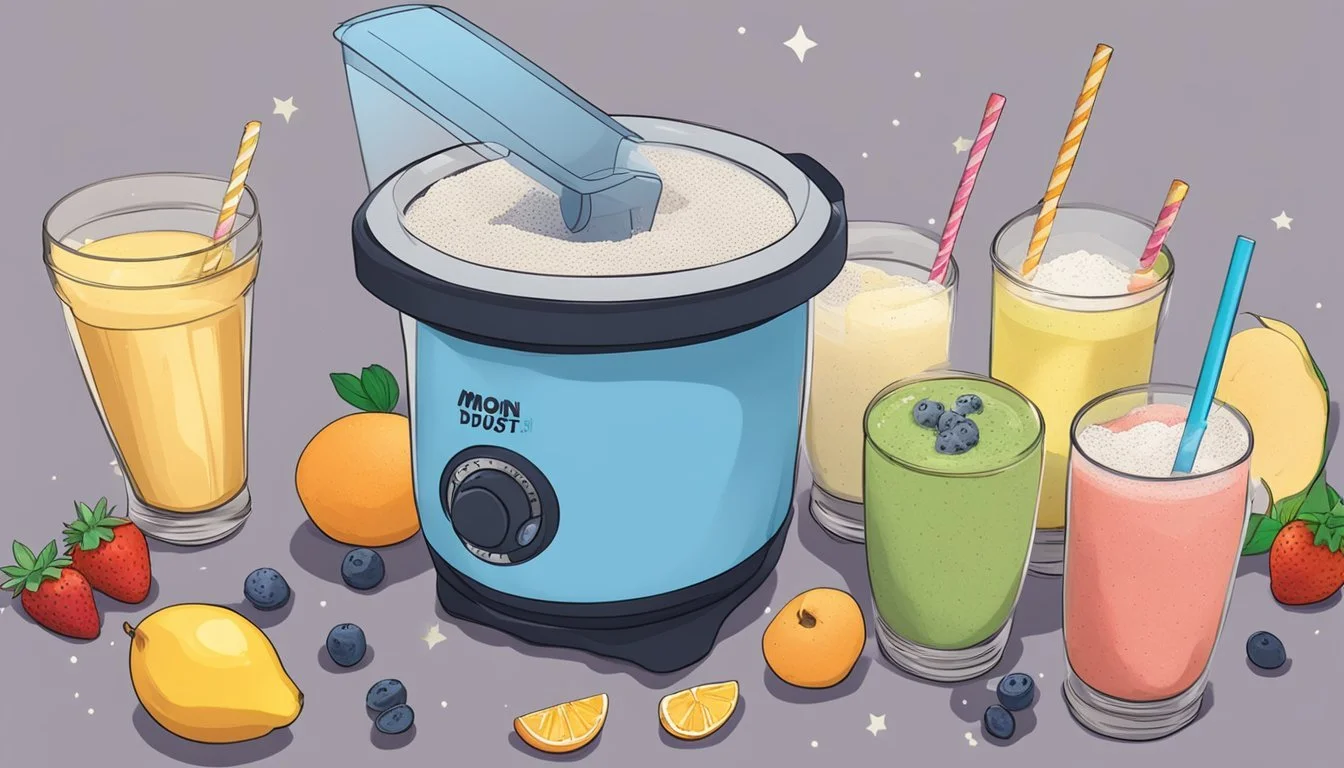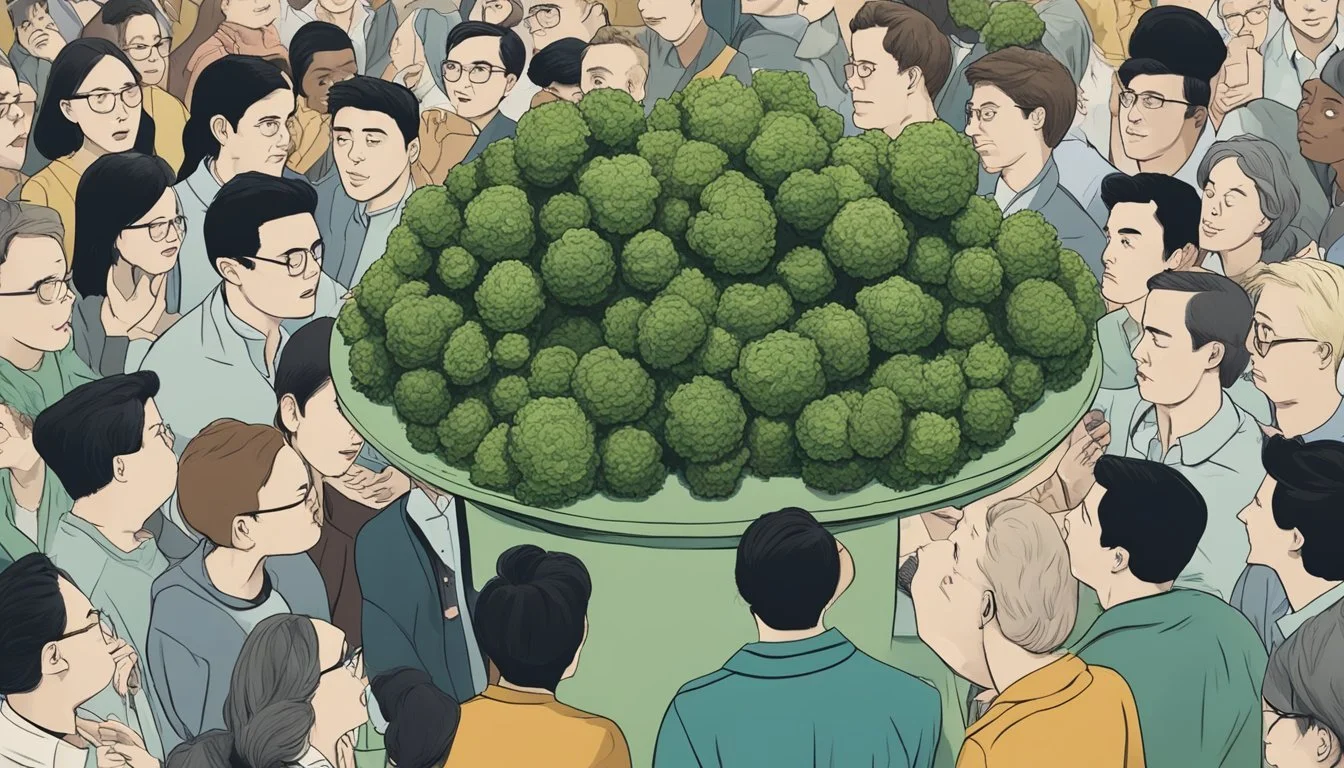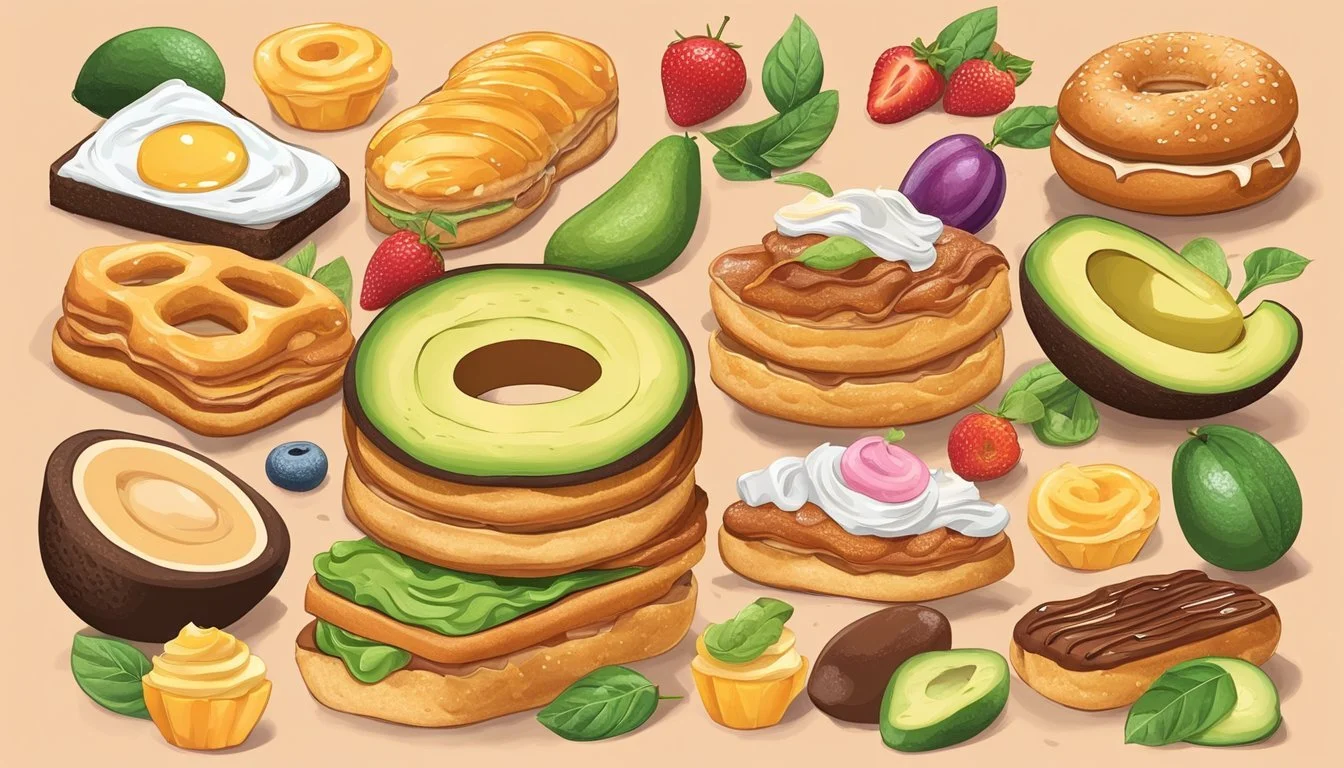10 Foolish Food Fads
Unmasking Popular but Misguided Trends
Food trends ebb and flow with cultural shifts and the ever-changing desires of consumers. When the public demands healthier options, markets swiftly adapt, offering products that claim to be the solution. Similarly, preferences for low-fat or low-sugar items compel manufacturers to adjust their offerings. Food fads, while often captivating and trendy, can sometimes lead to bizarre and questionable choices.
From the rise of televised culinary competitions to the relentless marketing strategies of the food industry, these trends capture the imagination and wallets of many. Not all food fads are created equal, with some lingering longer due to their unique appeal or purported health benefits. The allure of these trends often lies in their promise of quick fixes and novel experiences.
1) Moon Dust Smoothies
Moon Dust Smoothies have gained attention due to their unique ingredients and high price tag. Popularized by Gwyneth Paltrow, these smoothies include ingredients like almond milk, coconut oil, and vanilla mushroom protein powder.
A key feature of these smoothies is the inclusion of Moon Dust. Options for Moon Dust include varieties like Spirit Dust, Sex Dust, and Action Dust. Each jar of Moon Dust costs around $60.
The total cost of making a Moon Dust Smoothie has been reported to be more than $200, although each individual drink is said to actually cost about $10.52. This high cost often makes Moon Dust Smoothies a topic of discussion among food fad enthusiasts.
Moon Dust Smoothies are marketed for their supposed health benefits, associated with the different types of dust used. Whether these benefits are substantial or backed by science remains a matter of debate.
This trend reflects the broader interest in superfoods and exotic health supplements. While some people swear by these drinks, others view them as an example of the extremes to which food fads can go.
2) Activated Charcoal Lattes
Activated charcoal lattes have surged in popularity, particularly on social media. The drink is known for its striking dark hue, which makes it visually appealing. The primary ingredient, activated charcoal, is reputed for its detoxifying properties.
Advocates claim that these lattes can aid digestion and reduce bloating. However, there is limited scientific evidence to support these benefits. Most health professionals remain cautious, noting that frequent consumption may interfere with nutrient absorption.
Activated charcoal can bind to vitamins and medications, potentially reducing their effectiveness. It is not recommended for daily intake. Restaurants and cafes promote these lattes largely due to their visual appeal rather than any proven health benefits.
For those curious to try it, moderate consumption is essential. While it may offer a novel experience, it should not replace more balanced dietary choices. The novelty of activated charcoal lattes may catch attention, but their health impact is still under scrutiny.
3) Blue Majik Smoothies
Blue Majik, a blue-green algae extract, has seen a surge in popularity for its vibrant color and supposed health benefits.
Many add it to smoothies, aiming for a visually appealing drink packed with nutrients. Combining it with fruits, chia seeds, or Greek yogurt is common, promising a blend high in antioxidants and proteins.
Despite these attractions, some question the cost-effectiveness. With prices like $62 per 50 grams, Blue Majik can be expensive for daily use.
Additionally, its taste might not appeal to everyone. Some describe it as slightly fishy, potentially clashing with sweeter smoothie ingredients.
Promoters of Blue Majik smoothies claim it fights free radicals and boosts the immune system. Availability in powder or pill form makes it versatile, suitable for various drinks.
While Blue Majik smoothies can be a visually stunning addition, it's essential to weigh the cost and taste against the potential health benefits.
4) Rainbow Bagels
Rainbow Bagels emerged as a colorful food fad in the mid-2010s, capturing attention with their vibrant hues. Created by Scot Rossillo at The Bagel Store in Williamsburg, Brooklyn, these bagels became a viral sensation on social media.
The appeal of Rainbow Bagels lies mainly in their aesthetic, featuring a spectrum of bright colors swirled together.
Social media played a significant role in their popularity. Posts featuring the visually striking bagels garnered numerous likes and shares, driving immense foot traffic to The Bagel Store. The demand was so high that the store temporarily closed to adapt to the surge.
Rainbow Bagels do not offer unique flavors despite their appearance. They often taste like traditional bagels, focusing more on visual impact than culinary innovation. The striking colors are achieved through food coloring, not natural ingredients.
Some critics argue that Rainbow Bagels are more about visual pleasure than taste. While aesthetically pleasing, they add little to the culinary experience beyond their looks. Nonetheless, their popularity remains a testament to the influence of social media on food trends.
5) Unicorn Frappuccinos
Unicorn Frappuccinos burst onto the scene as a limited-edition beverage from Starbucks, captivating customers with their vibrant colors and novelty appeal.
These visually striking drinks featured a blend of mango syrup, white chocolate, and raspberry powder, creating a colorful and whimsical concoction. The mixture of sweet and tangy flavors was combined with a sprinkle of edible glitter for an added magical touch.
While aesthetically pleasing, the Unicorn Frappuccino was heavily criticized for its high sugar content and artificial ingredients. Despite these concerns, the drink generated significant buzz and quickly became a social media sensation.
Its popularity highlights the industry's ability to create visually appealing products that cater to consumers' desire for novelty, even at the expense of nutritional value. The rapid rise and fall of the Unicorn Frappuccino serve as a testament to the transient nature of food fads.
6) Crystal-Infused Water
Crystal-infused water is a trend where people place certain crystals in their drinking water, believing it imparts specific energies or benefits.
Advocates claim that crystals like clear quartz, rose quartz, and amethyst can enhance clarity, love, or emotional healing when submerged in water.
However, there is no scientific evidence to support these benefits.
Safety is a concern with this fad. Not all crystals are safe to put in water, as some can leach harmful substances.
For example, some crystals contain heavy metals or minerals that can dissolve in water, posing health risks.
Individuals attracted to crystal-infused water should research thoroughly to avoid potential hazards.
It's also recommended to use only non-toxic crystals that are deemed safe for water immersion.
Despite its popularity, crystal-infused water remains more about personal belief than proven health benefits.
This fad continues to thrive mainly due to its aesthetic appeal and the cultural fascination with holistic wellness practices.
7) Kale Lollipops
Kale lollipops are among the more unusual food trends to have emerged recently. Combining the nutritious qualities of kale with the unconventional form of a lollipop, this snack aims to attract both health-conscious and novelty-seeking consumers.
These lollipops typically involve dehydrated kale formed into a candy-like shape. Despite the odd pairing, the idea is to make nutrient-rich greens more appealing, especially to children who might be resistant to eating vegetables.
The concept gained some attention in food circles, being mentioned as a cross between Russian red kale leaves and Brussels sprouts. These intriguing combinations have sparked curiosity among food enthusiasts.
The flavor profile is often enhanced with seasonings like lime juice and Sriracha, offering a tangy and spicy twist. While opinions vary, the inventive fusion of taste and health make kale lollipops a notable mention in the list of foolish food fads.
8) Avocado Toast Macarons
Avocado toast has taken social media by storm, becoming a brunch staple for many. Macarons, with their delicate texture and myriad of flavors, have also climbed the ranks of trendy foods.
Combining these two popular items may seem appealing but results in a confusing mix. The creamy avocado texture clashes with the crisp macaron shell.
The combination can lead to a flavor profile that feels forced. Sweet macarons, paired with the more savory taste of avocado, don't blend seamlessly as one might hope.
Despite the efforts to innovate, Avocado Toast Macarons fall short. This pairing highlights a misguided attempt to merge two beloved items, ending in a culinary mishap.
9) Charcoal Ice Cream
Charcoal ice cream became quite the spectacle, drawing attention with its striking black color. This unique hue comes from activated charcoal, a substance often touted for its detoxifying properties. On social media, the ice cream's color makes it an eye-catching treat, leading to viral photos and curiosity-driven purchases.
Despite its popularity, the health claims surrounding charcoal ice cream are not backed by substantial research. Experts have noted that activated charcoal can interfere with medication absorption and isn't necessarily beneficial as a food additive. Consuming it in ice cream form doesn't equate to a healthier dessert option.
Consumers should be cautious about this trend. Activated charcoal in food might disrupt normal digestion and reduce the efficacy of some medications. Therefore, while it may appear trendy and unique, it's important to consume it with awareness of potential drawbacks.
Charcoal ice cream is a fascinating example of how food trends can capture public imagination based on aesthetics more than actual benefits. The dark color provides an illusion of novelty, but the clinical backing for its supposed health advantages remains weak.
10) Sushi Burritos
Sushi burritos are a fusion food combining elements of traditional Japanese sushi and Mexican burritos. These dishes typically consist of sushi rice, various proteins like fish or tofu, vegetables, and sometimes unique sauces, all wrapped in nori and rolled like a burrito.
The concept initially gained popularity in urban areas, appealing to those seeking quick, handheld meal options. Sushi burritos are often marketed as healthier alternatives to traditional fast food, boasting fresh ingredients.
Preparing sushi burritos at home involves making sushi rice, seasoning it with rice vinegar, and adding fillings. Common ingredients include fresh fish, avocado, cucumber, and spicy mayo. The mixture is then wrapped tightly using nori sheets.
While sushi burritos offer a twist on conventional sushi, their novelty status has led some to question their staying power. Critics argue that combining two distinct cuisines dilutes the authenticity of both.
Despite mixed opinions, sushi burritos remain a trendy food item, especially among younger generations looking for innovative dining experiences.
Historical Contexts of Food Fads
Food fads are deeply rooted in both historical events and evolving societal attitudes. Understanding these contexts can provide insight into why certain foods became popular during specific time periods.
Early Examples
In the 1920s, America experienced unprecedented prosperity and technological advancements. This era sparked a series of food fads that signified extravagance and experimentation. For example, the Three P's Salad (peas, pickles, and peanuts) became a notable dish.
During earlier centuries, food fads were often influenced by social hierarchies and availability of ingredients. In Ancient Greece, an athlete consumed only meat for a year in preparation for the Olympic Games. This single-food focus highlighted the belief that certain diets could enhance physical prowess.
Modern Trends
The period from the 1980s onwards saw drastic shifts in dietary preferences. Public perception flipped between high-carb, low-fat diets to the more recent low-carb, high-fat trends. The 1990s popularized fat-free products, reflecting a widespread aversion to dietary fats.
This was followed by the rise of diets like Atkins, emphasizing reduced carbohydrate intake. These trends were driven by evolving scientific research, media influence, and celebrity endorsements. From the mid-2000s, gluten-free and paleo diets gained traction, reflecting increased awareness of health and wellness.
Presently, the popularity of plant-based diets demonstrates how ethical considerations are becoming a significant factor in food choices.
Psychological Drivers of Food Fads
Food fads often stem from various psychological influences. These can include social pressures and cognitive biases that shape an individual's behavior and choices regarding diet.
Social Influence
Social influence plays a critical role in shaping food fads. People often adopt diet trends to feel a sense of belonging to a group. Peer pressure and social acceptance are key elements driving such behaviors. Social media amplifies these trends by showcasing influencers and celebrities endorsing specific diets, creating a bandwagon effect.
Furthermore, communal activities like group dieting or shared meal plans can reinforce these trends. Studies indicate that people are more likely to adhere to a diet if they see others around them doing the same. Therefore, social networks can serve as powerful motivators in adopting and maintaining food fads.
Cognitive Biases
Cognitive biases significantly impact the popularity of food fads. Confirmation bias leads individuals to favor information that supports their existing beliefs about diet and health, making them susceptible to trendy diets that promise quick results.
Anchoring bias can also play a part, where the first piece of information about a diet trend heavily influences subsequent decisions. This explains why initial exposure to a fad diet can anchor an individual's perception, making it hard to consider alternative eating plans.
Moreover, the halo effect allows people to attribute excessive positive attributes to a diet endorsed by a well-regarded person or celebrity. This psychological inclination makes fad diets appear more credible and appealing than they might actually be.
Health Implications
Food fads, while popular, can come with significant health consequences. Key issues include nutritional deficiencies and negative impacts on mental well-being.
Nutritional Deficiencies
Many fad diets restrict essential nutrients. Cutting out major food groups can lead to deficits in fiber, vitamins, minerals, and protective phytochemicals.
For example, low-carb diets may lack important vitamins and minerals found in whole grains. Similarly, juice cleanses often lack protein and healthy fats, leading to fatigue and muscle loss.
Restrictive diets can also result in inadequate intake of vital nutrients like iron, calcium, and vitamin D. This risks anemia, weakened bones, and other health issues.
In many cases, the promise of quick weight loss overshadows the potentially harmful long-term effects on nutritional health.
Mental Well-being
Fad diets often encourage unhealthy relationships with food. The pressure for rapid results can lead to stress and disappointment if goals are not achieved.
Constant restriction and hunger can result in anxiety and obsessive behaviors around eating. Social situations may become challenging, impacting one’s ability to enjoy meals with friends and family.
Moreover, the cycle of losing and regaining weight can contribute to body image issues and low self-esteem.
In the long term, this can create a harmful cycle of dieting and disordered eating, which can have lasting impacts on mental health.
Impact on the Food Industry
Foolish food fads have significantly influenced market dynamics and consumer behavior, driving shifts in product offerings and purchasing patterns.
Market Dynamics
The proliferation of food fads has impacted various sectors, from retail to dining establishments. Temporary trends like avocado toast and matcha have created spikes in demand for specific ingredients, leading to supply chain fluctuations. Retailers often scramble to stock trending items, which can inflate prices and create supply shortages. Additionally, food manufacturers may invest in developing new product lines that cater to these fads, only to face potential losses when consumer interest wanes.
Restaurants also experience these effects, with many adding trendy dishes to their menus to attract customers. The food truck industry, for example, has leveraged fads to maintain its 7.9% annual growth rate since 2011. However, this can result in high turnover rates of menu items and increased operational complexity.
Consumer Behavior
Fads shape consumer purchasing habits, often leading to fleeting loyalty. People are drawn to social media-driven trends, creating a herd mentality that can quickly dissipate. This behavior influences how consumers shop, favoring stores that stock trendy items. When the fad fades, these previously popular items can end up being wasted, contributing to food waste issues.
Intriguingly, these trends can also drive more sustainable practices, as seen with the buzz around sustainable cooking and local produce. Yet, the fickle nature of consumer interest means that what is popular today might be irrelevant tomorrow, starkly affecting retailers and manufacturers trying to predict and cater to consumer desires.












